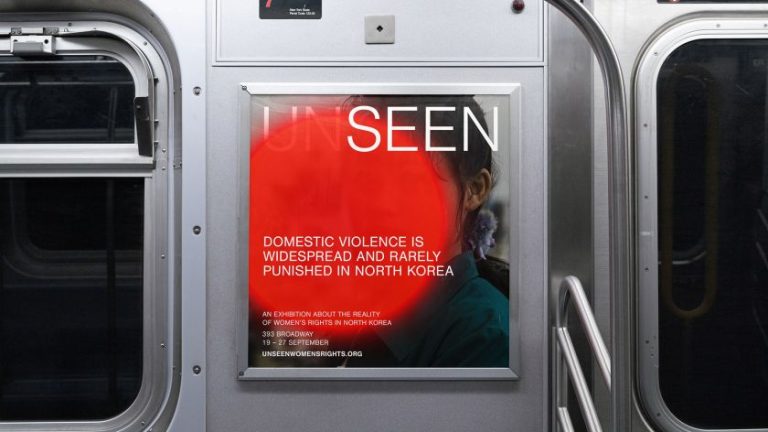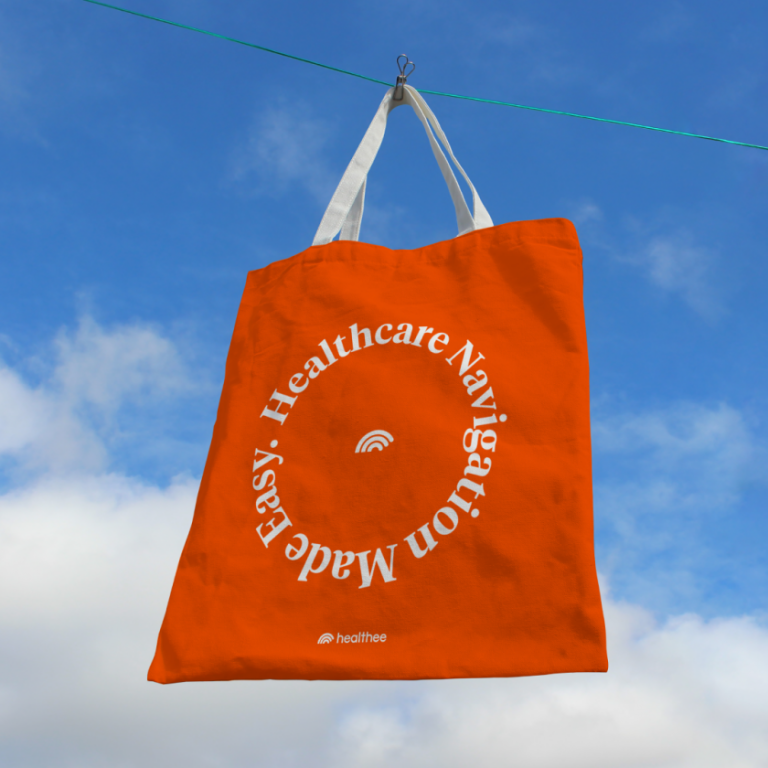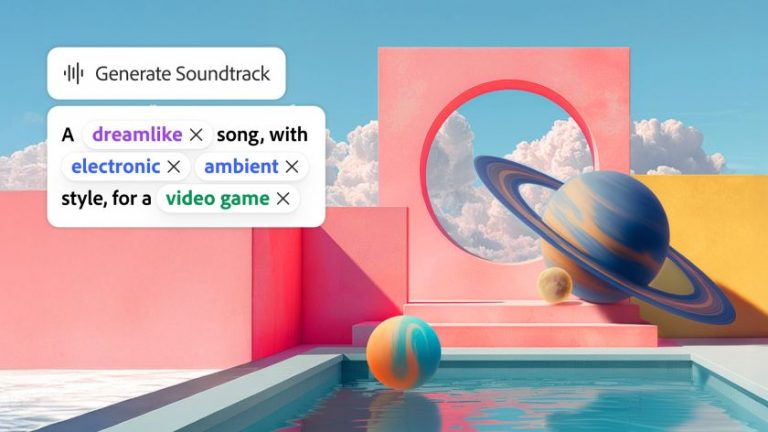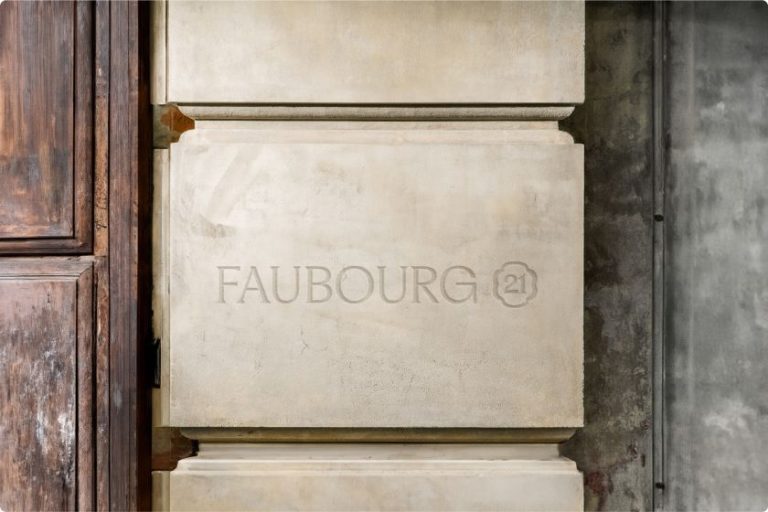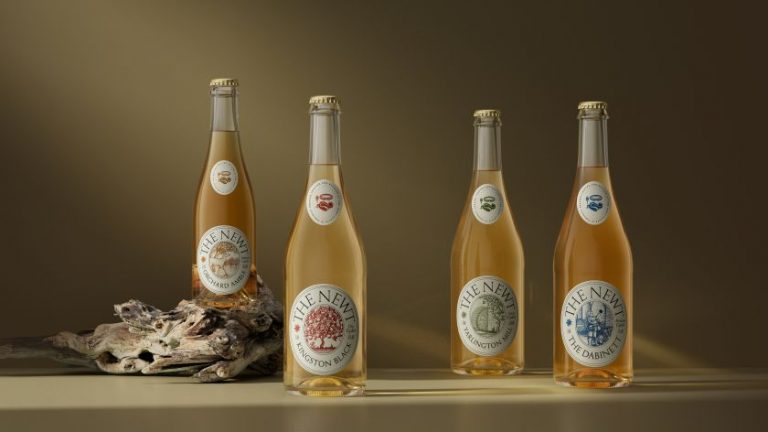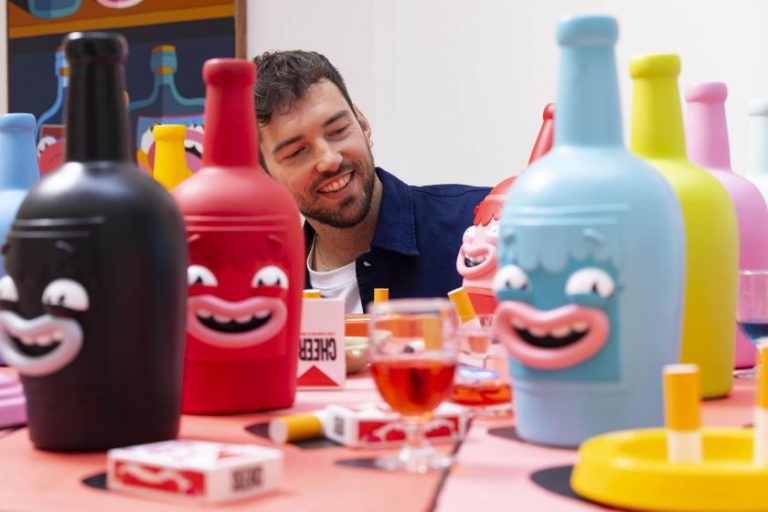Political tropes and materials such as leaflets, protest banners, and opinion stickers are heavily featured in the graphic identity of the exhibition.
Munich-based studio WVH has designed the graphic concept and identity for an architecture exhibition at the Pinakothek der Modern in Germany, using political codes and aesthetics as well as recycled materials from previous exhibitions.
The Gift is a collaborative exhibition by the Technical University Munich and Taubman College of Architecture and Urban Planning at the University of Michigan. Through gifted buildings, it interrogates stories of generosity and violence in architecture and seeks to unearth the imbalanced relationship between the giver and the receiver.
Based on work with local researchers and communities, it presents case studies from four continents, including stories of humanitarian gifts for Skopje, North Macedonia, the gift of land in Kumasi, Ghana, diplomatic gifts for Ulaanbaatar, Mongolia, and philanthropic gifts in East Palo Alto, California, USA.
Initially, violence and generosity were supposed to be separated both in content and graphics. However, the studio pivoted to a more “democratic, readable, and accessible implementation”, where ‘good’ and ‘bad’ are “equally legible and present on the textual level”, according to WVH co-founder Sophie von Hartmann.
Political aesthetics were also prevalent from the initial design concept through to production. WVH took the approach of creating a corporate identity and effectively integrating the public, creating large visuals on the façade, among other politically charged elements, like the logo.
The latter was designed to be easily recognisable and takes inspiration from typical political campaigns, such as Bernie Sanders’s presidential campaign in 2020. The studio merged bold and simple yet distinctive lettering – a reshaped version of the typeface Times – with primary colours, such as red and yellow, for the logotype.
It was also designed for 3D rotation on invitations and screens, with additional exhibition information being added where needed in a bright purple flexible box.
“We have the polished design of a political campaign, the rotating animation of a broadcasting channel, and the shifted dot on the ‘i’, which indicates that something is off; that something isn’t right in its usual place”, says von Hartmann.
The experience is split into three levels: The Main Level, The Four Cities and the Appendix/Student section and The Information Level.
The logo first appears on the main level, while the information level – which only uses the typeface Helvetica Now for readability – is reserved for all content, texts, diagrams, images, and maps.
Each location in The Four Cities section has its own distinct colour to help orient visitors within the exhibition. Von Hartmann says: “These colours appear on text panels, stickers, and leaflets, visually structuring the exhibition, and each city also has its own logo, with typefaces derived from actual research materials”.
She notes that the logo font for Skopje was based on a historic city magazine, while a local street sign inspired East Palo Alto’s typeface.
WVH co-founder Moritz Wiegand explains how the studio sought to unify the diverse case studies of the four cities. So, it came up with The Gift, which is the “main umbrella campaign,” as well as sub-campaigns for the global case studies. “Together, they form a colour-blocked unity but can also be detached from each other,” he says.
Wiegand identifies repetition as another strong political stylistic device that appears throughout the exhibition. He describes how the colours of the individual cities “distinguish themselves like political parties vying for attention” while each city or chapter has its own leaflet, serving as “a historical relic for conveying political opinions”.
Another key feature of the exhibition is temporary architecture, which is made from materials like wood, cardboard, and poster paper. It comprised simple wooden constructions and taped sticker banners, as well as what Wiegand says are “typical elements found in public spaces to present political or social issues and opinions,” such as billboards, protest banners, and pasted opinion stickers.
The exhibition also incorporates recycled materials from other exhibitions.
Wiegand and von Hartmann agreed that the biggest challenge was “the vast amount of material and its handling in very little time”, along with devising “a unified design system to accommodate everything”.
WVH also wanted to recognise exhibition architect Andjelka Badnjar Gojnić, with whom it developed and implemented the concept.

